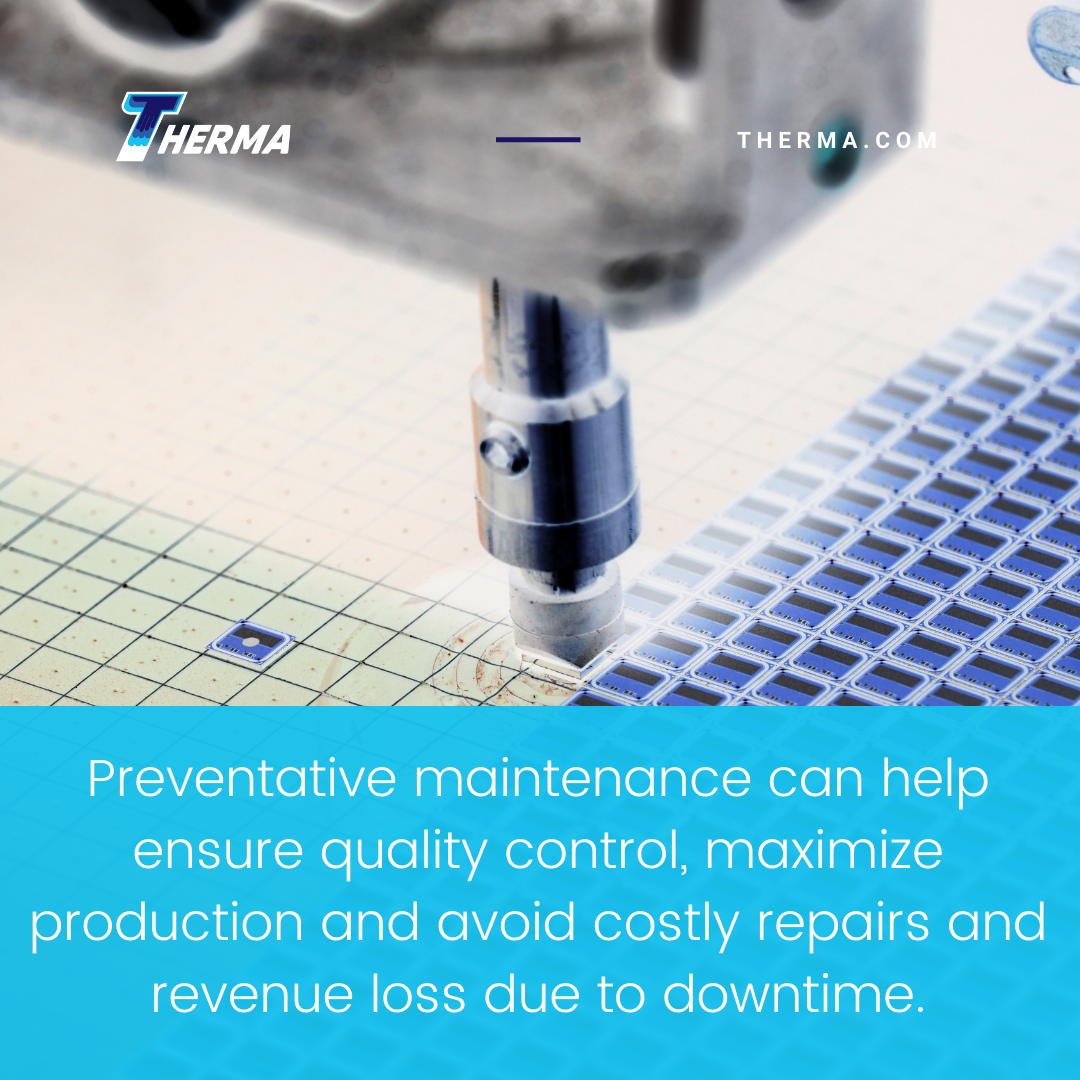by Ali Kriscenski
The U.S holds 48% of the $340 billion semiconductor industry global market. The semiconductor fabrication market is highly competitive with global annual sales expected to exceed $600 billion in 2022. The current volatility of global supply chains and the increasing market demand make optimization of semiconductor fabrication equipment a top business priority.
Importance of Preventative Maintenance
The worrisome global computer chip shortage of 2021 was worse than initially thought. At the same time, market demand for semiconductors was nearly 20% higher than in 2019. The interconnected industries affected by the ongoing shortage include automotive, healthcare, mobile devices, appliances, and consumer goods.
For fabrication plant managers, the key to weathering the current industry conditions is to avoid unplanned operational downtime. The 3-4 month production time for semiconductors can leave little room for schedule disruptions, especially in a high demand market with a growing backlog.
Semiconductor fabrication relies on precision and consistency to create the essential components of computers, sensors and electronic equipment. Preventative maintenance can help ensure quality control, maximize production and avoid costly repairs and revenue loss due to downtime.
System Troubleshooting and Calibration
Staying well ahead of potential equipment or device issues can ensure that small issues are discovered, diagnosed and remedied before causing costly problems. Performing regularly scheduled inspections and equipment calibration can be the difference between a planned 48-hour shutdown or an unanticipated production halt with a ‘to be determined’ end date contingent on backordered parts.
Semiconductor fabrication equipment depends on careful maintenance protocols for equipment optimization and safety. Maintaining up-to-date equipment maintenance procedures, schedules and logs helps ensure consistent long-term equipment operations. It also helps fabrication plant managers plan for long-term capital investments, such as equipment upgrades.
Common Semiconductor Equipment Failures
The fabrication process of advanced semiconductors can involve thousands of process steps. Each piece of equipment at a process step has the potential to fail, cause a default and potentially reduce production yield. The production of advanced semiconductors can involve fabrication tools with thousands of parts sourced from a multitude of suppliers.

These components can include chambers, pumps, seals and valves. Some common fabrication equipment issues include corrosion, pressure regulator malfunction, or improperly sized or fitted seals. Any of these issues could have potentially large impacts on fabrication equipment performance and product quality.
Optimizing Equipment with Professional Maintenance Service
The best strategy to keep equipment running efficiently is to engage a team of professional technicians to perform regular maintenance, analyze equipment performance, and support strategies for ongoing updates and improvements. Another strategy that this expertise can help with is how to improve system monitoring and data collection in a way that continually optimizes production and extends the lifespan of existing components and devices.
Therma’s team of experts has unparalleled experience in designing, fabricating, and maintaining systems and controls for semiconductor fabrication. Therma brings a decades-long history of custom maintenance programs and in-house repair services. Therma has been an integral services provider to Silicon Valley, offering mechanical and design support to the region’s most well known semiconductor and process fabrication companies. Learn more about how our knowledge can optimize your facility’s semiconductor fabrication productivity, contact Therma today.
Ali Kriscenski was trained in high-performance building design at Boston Architectural College. She has worked with leading architecture and construction firms in NYC and New England and served on the executive team at the Forest Stewardship Council International. She was the managing editor at Inhabitat and has worked pro bono for the Green Building Institute, ISEAL Alliance and Habitat for Humanity.
Sources
NIST – Semiconductor Thin Film Design Optimization
Semiconductor Industry Association (SIA) – Global Semiconductor Sales Increase 24% Year-to-Year in October; Annual Sales Projected to Increase 26% in 2021, Exceed $600 Billion in 2022
McKinsey & Company – Optimizing back-end semiconductor manufacturing through Industry 4.0
Computer World – About That Alarming Chip Shortage









